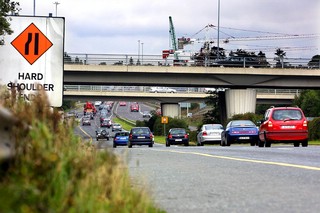Air Quality Impact Of Road Schemes

Assessing the air quality & climate impact of a proposed road scheme involves 3 separate stages of assessment - the constraints study, the route selection and finally the environmental impact study:
Constraints Study
For the Constraints Study, the prevailing air quality within the study area is characterised using representative EPA and local authority monitoring data. Existing sources of traffic and non-traffic derived air emissions (including CO2) are identified, along with the locations of sensitive receptors within the study area. Comments are made in relation to the opportunities that exist and the requirement for provision of mitigation measures.
Route Selection
The route options are compared based on their impact on population exposure to nitrogen dioxide (NO2) and PM10, and also their impact on regional CO2 emissions. The assessments are carried out using the UK DMRB air dispersion model and involve identifying the number of residential properties within 50m of each route option and all other road links that would experience a significant (>10%) change in traffic levels. The results quantify the overall increase or decrease in both population exposure to air pollution and regional CO2 emissions for each route option. This allows the route options to be ranked based on their impact on air quality and climate.
Environmental Impact Statement
The air quality assessment for the EIS involves a detailed baseline air quality survey for NO2, PM10, PM2.5 and benzene at roadside and rural locations close to the route alignment. The review of EPA and local authority monitoring data carried out for the Constraints Study is revised and updated. Air dispersion modelling in the opening and design years is conducted using either the UK DMRB model or the US EPA approved CAL3QHCR air dispersion model. Ambient pollutant concentrations of CO, benzene, NO2, PM10 and PM2.5 are predicted at sensitive receptors close to the route alignment. Modelling is carried out for the "do minimum" and "do something" scenarios, a comparison of which quantifies the impact of the scheme. The impact for each pollutant is then defined using the NRA air quality guidelines. The regional impact (including climate) is determined by calculating the difference between total emissions of VOCs, NOx and CO2 for the "do minimum" and "do something" scenarios.
Oral Hearings
AWN Consulting has appeared at over 20 road scheme oral hearings and have gained extensive experience in providing expert testimony at oral hearings by working closely with legal counsel and the design team.